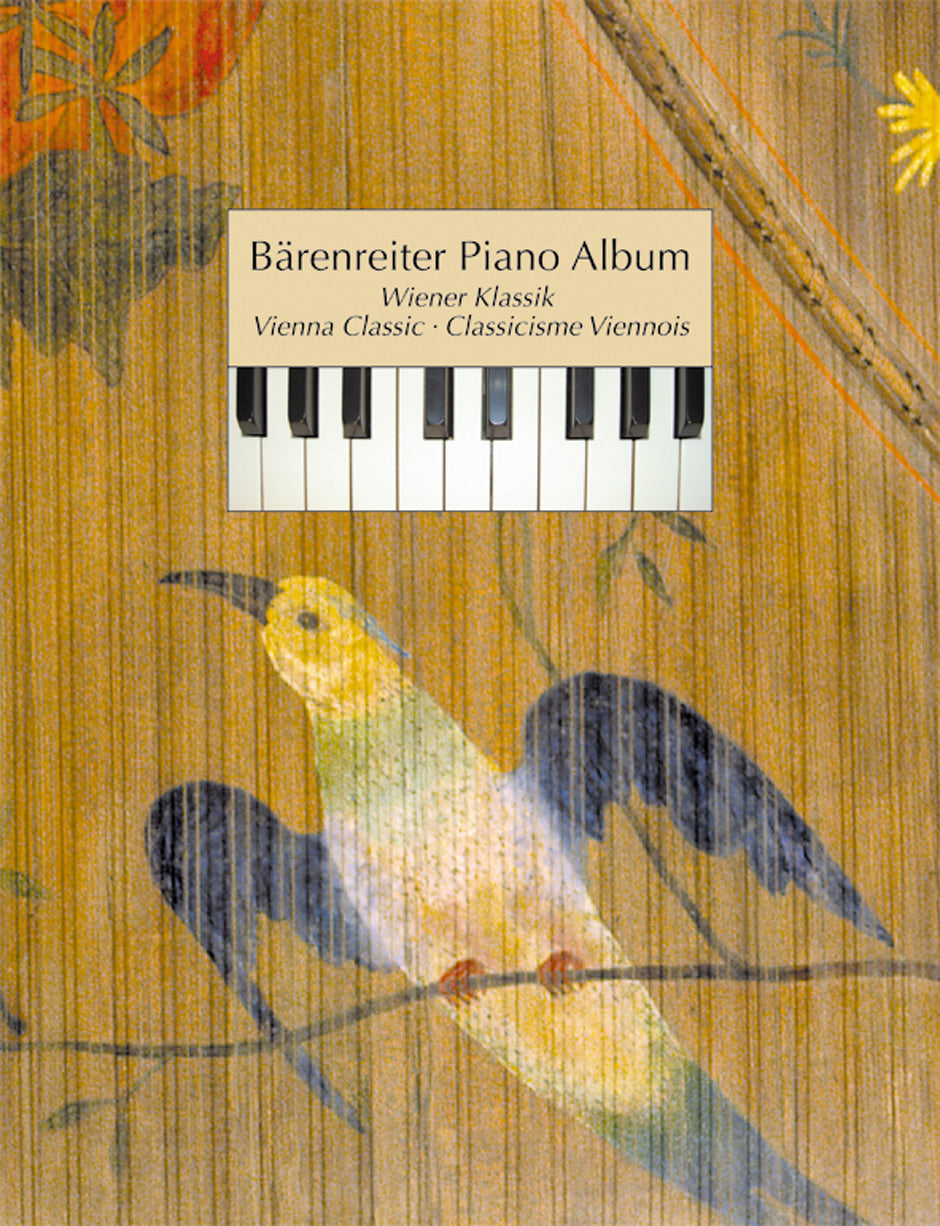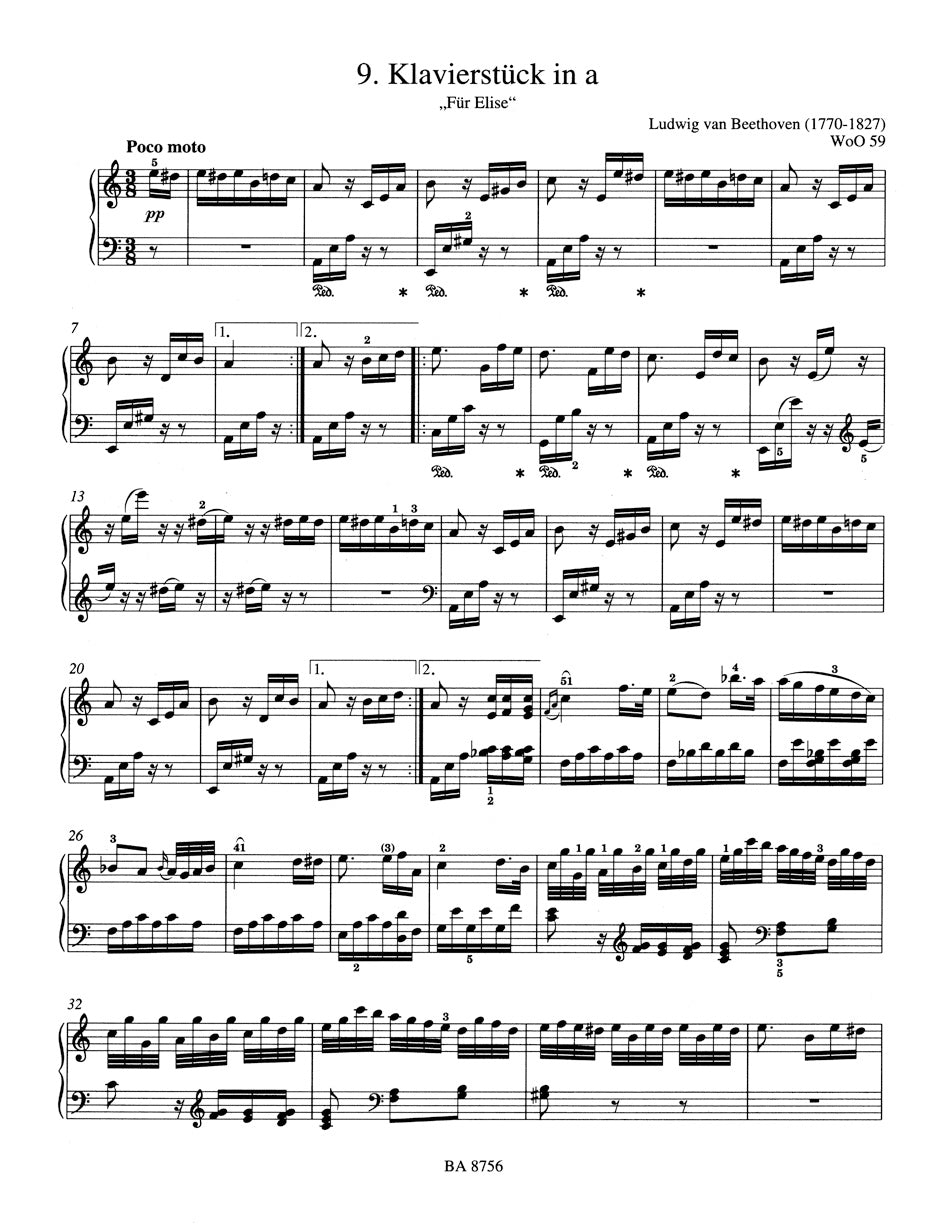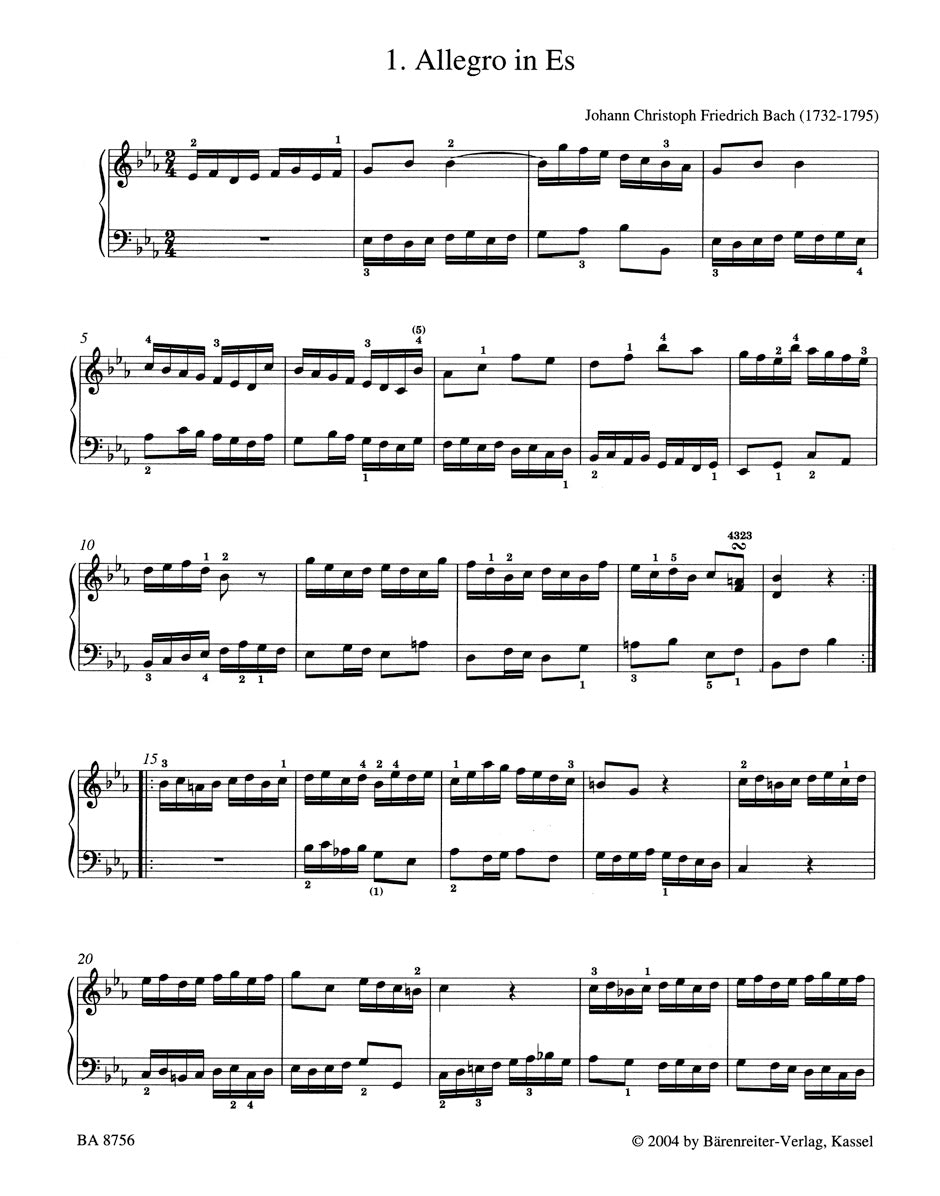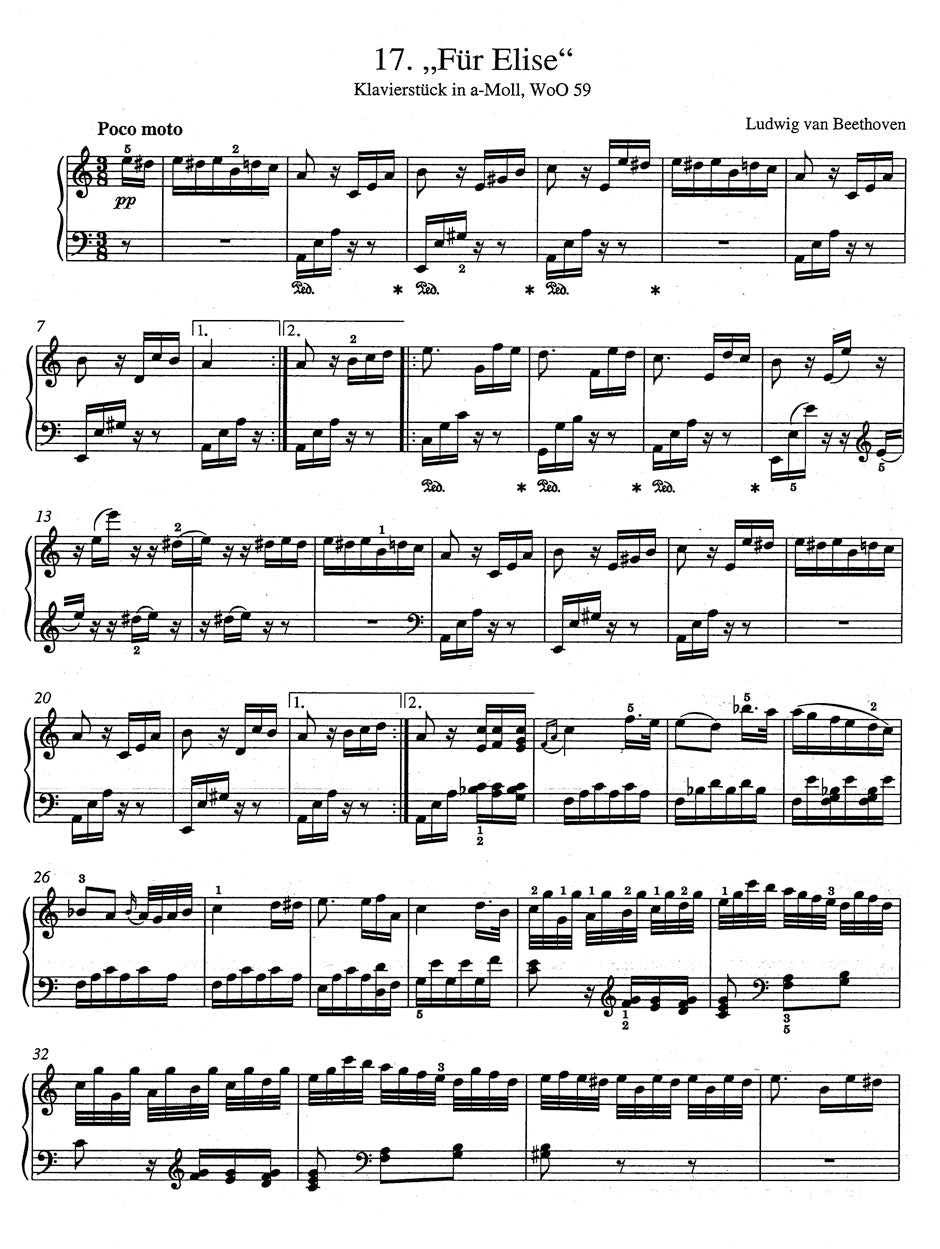Bärenreiter Piano Album - Vienna Classic
In stock and typically ships within 1 business day.
- Composers: Johann Nepomuk Hummel (1778-1837), Wolfgang Amadeus Mozart (1756-1791), Ludwig van Beethoven (1770-1827), John Field (1782-1837), Muzio Clementi (1752-1832), Franz Schubert (1797-1828), Thomas Attwood (1765-1838), Jiří Antonín (Georg Anton) Benda (1722-1795), Joseph Haydn (1732-1809), James Hook (1746-1827), Daniel Gottlob Türk (1750-1813), Anton Diabelli (1781-1858)
- Editors: Michael Töpel (1958-), Anette Töpel
- Instrumentation: Piano
- ISMN:
- Size: 9.1 x 11.8 inches
- Pages: 52
Description
Easy to moderately difficult pieces by Haydn, Mozart and Beethoven, the three great classics of the VIennese School, form the main focus of this album. But these three greats were not the only composers to leave an imprint on piano music between 1760 and 1827.
Accordingly, this collection also contains appealing pieces by Mozart's pupils Thomas Attwood and Johann Nepomuk Hummel as well as the composer-publisher Anton Diabelli. Works by contemporaries as Anton Benda, Daniel G. Türk and James Hook also introduce pianists to the great expressive range of classical piano music.
As appealing in its contents as in its appearance, this collection is rounded off with annotated color illustrations of contemporary keyboard instruments. It consists entirely of original compositions accompanied by reliable fingering. By focusing on relatively short pieces in a wide range of forms, the volume is ideal for adding variety to piano lessons while conveying a vivid impression of thin in E Major genres of classical piano music, from dances and variations to the nascent sonata form.
Works:
- J. Haydn: Allegro in E-flat Major
- J. Haydn: Piano Sonata in C Major, Hob. XVI:7
- J. Haydn: German Dances, Hob. IX:12
- J. Haydn: Allegro in G Major (after Hob. III:41 IV)
- Mozart: Fantasia in D Minor, K. 397 (385g)
- Mozart: Adagio for Glass Harmonica in C Major, K. 356 (617a)
- Mozart: "Alla Turca" from Sonata in A Major, K. 331
- Beethoven: 1st Movement from Piano Sonata No. 14 in C-sharp Minor ("Moonlight"), Op. 27, No. 2
- Beethoven: Für Elise (Bagatelle in A Minor), WoO 59
- Beethoven: 6 Variations on a Swiss Song, WoO 64
- Beethoven: No. 11 in B-flat Major from 11 Bagatelles, Op. 119
- Hook: Rondo in F Major
- Diabelli: Rondo in F Major from Sonatina, Op. 168, No. 1
- M. Clementi: Un poco andante in G Major from Piano Sonata in D Major, Op. 25, No. 6 (previously, Op. 26, No. 3)
- Attwood: Sonatina G Major
- Attwood: Allegro in C Major from Sonatina No. 2
- Hummel: Dialogue Taquin
- Türk: Larghetto amoroso in C Major (from "Zwölf Handstücke beim Unterrichten")
- Türk: Arietta in B-flat Major (from "Zwölf Handstücke beim Unterrichten")
- G. Benda: Sonatina in D Major
- Schubert: Minuet in A Major, D 334
- Field: Waltz in A Major
Publishers use a lot of words to describe what they sell, and we know it can be confusing. We've tried to be as clear as possible to make sure you get exactly what you are looking for. Below are descriptions of the terms that we use to describe the various formats that music often comes in.
Choral Score
A score for vocalists that only contains the vocal lines. The instrumental parts are not there for reference. Generally, cheaper than a vocal score and requires multiple copies for purchase.
Facsimile
Reproductions of the original hand-written scores from the composer.
Full Score
For ensemble music, this indicates that the edition contains all parts on a single system (there are not separate parts for each player). In larger ensembles, this is for the conductor.
Hardcover
Hardbound. Generally either linen-covered or half-leather.
Orchestral Parts
Similar to a wind set, this is a collection of parts. In the case of strings, the numbers listed are the number of copies included, though generally these are available individually (often with minimum quantities required).
Paperback
When publishers offer multiple bindings (e.g. hardcover) or study scores, this is the "standard" version. If you're planning to play the music, this is probably what you want.
Performance / Playing Score
A score of the music containing all parts on one system, intended for players to share. There are not separate parts for each player.
Set of Parts
For ensemble music, this indicates that there are separate individual parts for each player.
Solo Part with Piano Reduction
For solo pieces with orchestra, this is a version that contains a piano reduction of the orchestra parts. For piano pieces, two copies are typically needed for performance.
Study Score
A small (think choral size) copy of the complete score meant for studying, and not playing. They make great add-ons when learning concertos and small chamber works.
Vocal Score
A score prepared for vocalists that includes the piano/organ part or a reduction of the instrumental parts.
Wind Set
For orchestral music, this is a collection of wind and percussion parts. The specific quantities of each instrument are notated.
With Audio
In addition to the printed music, the edition contains recordings of the pieces. This may be an included CD, or access to files on the internet.
With / Without Fingering (Markings)
Some publishers prepare two copies - a pure Urtext edition that includes no fingering (or bowing) suggestions and a lightly edited version that includes a minimal number of editorial markings.






